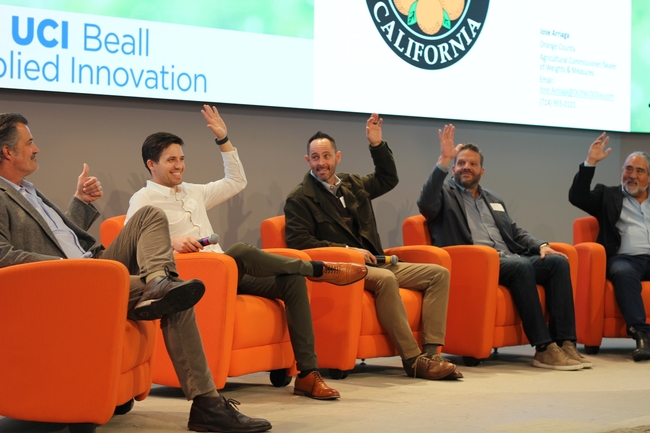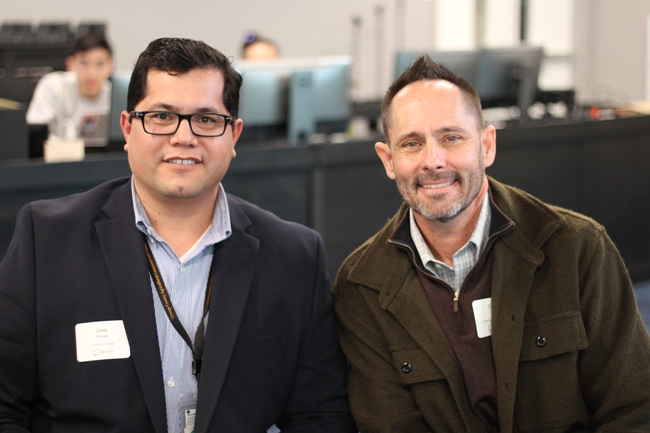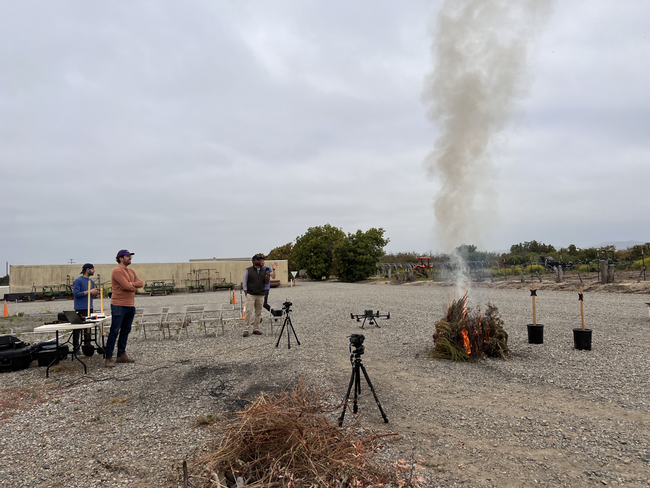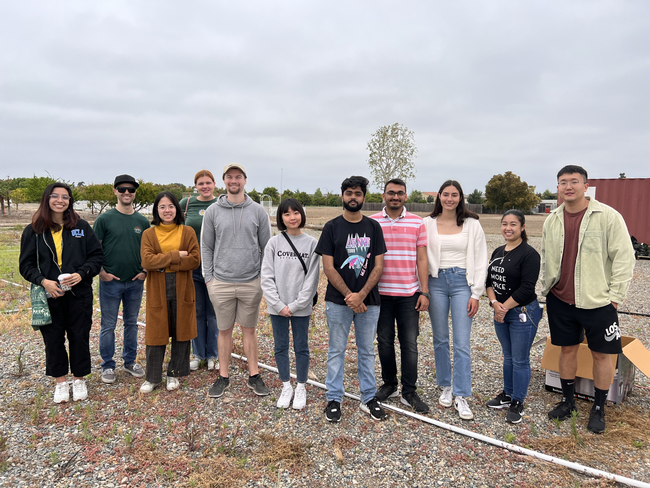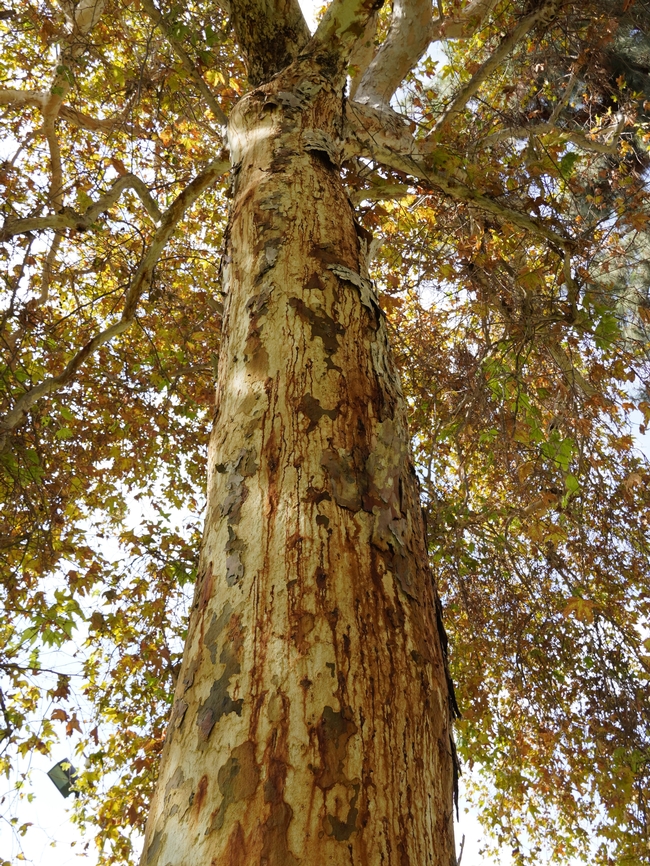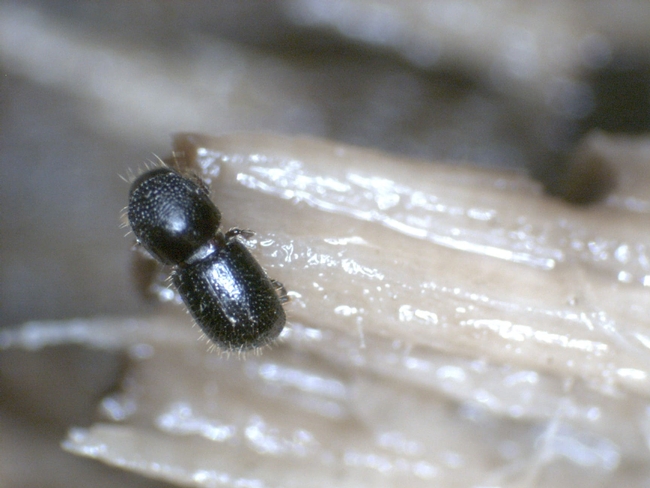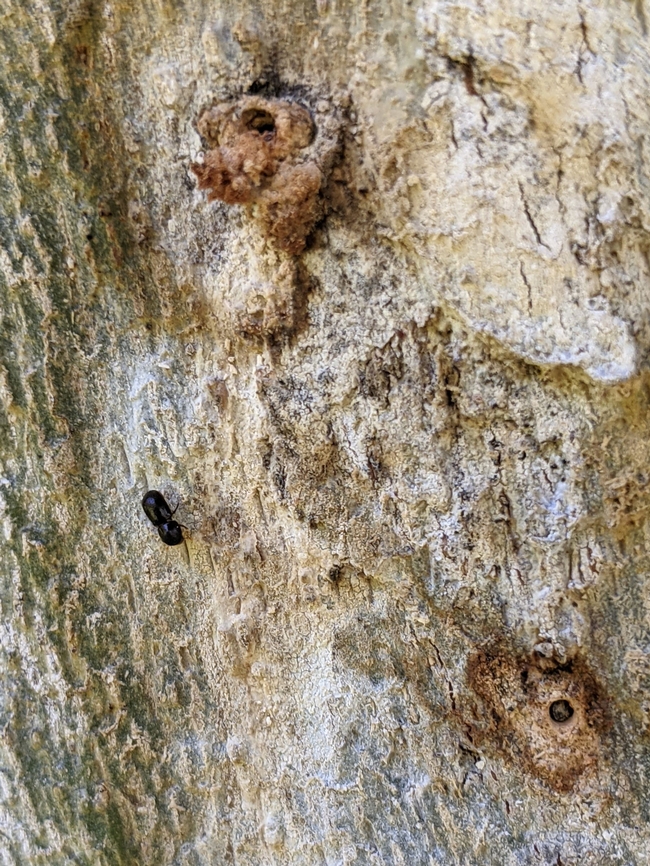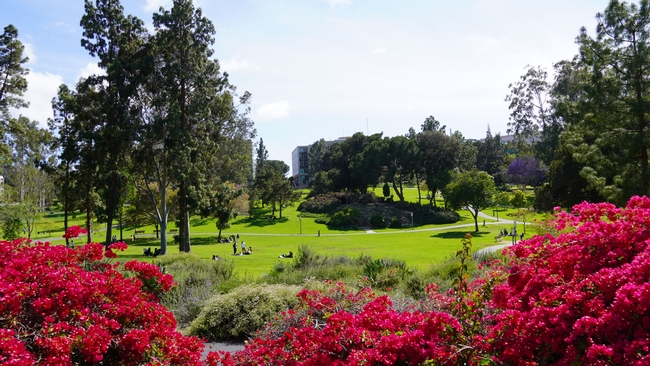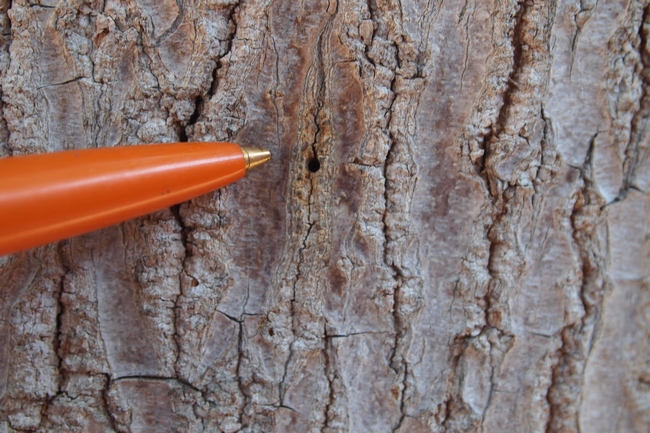Posts Tagged: Irvine
REC System Director Haver encourages systemic approach to agriculture
Agriculture generates $59 billion and employs nearly 400,000 individuals in California. The industry, however, is often threatened by challenges like climate change, land conversion and water scarcity. Motivated to act, Sustain Southern California – an organization associated with UC Irvine Beall Applied Innovation – hosted a roundtable discussion on Feb. 20 featuring subject matter experts including Darren Haver, director of UC Agriculture and Natural Resources' Research and Extension Center System.
During his keynote address, Jose Arriaga, Orange County Agricultural Commissioner, defined sustainability as food and fiber production that does not compromise the ability for future generations to meet their needs. In doing so, he acknowledged the benefit of discussing such timely topics with key players, especially for places where agriculture is not as prevalent as it used to be.
“Many people don't think of Orange County as a place for agriculture. It's probably because less land is being reserved for agriculture, not like back in the day. And that worries me,” said Arriaga.
The first roundtable discussion centered on sustainable agriculture, with Haver participating alongside other industry leaders based in Southern California, including A.G. Kawamura of Orange County Produce, Steve Brazeel of Sunterra Produce and Elevated Foods, Anthony Curci of Buttonwood Ranch and Parker Cohn from Performance Resource Management.
In discussing today's generation, Haver said that he has seen a shift over the last few decades away from yield alone, which used to be the most important aspect of production in agriculture. Today, much more attention is dedicated to sustainability – a change that Haver attributes to the younger generation of researchers and plant scientists working in agriculture.
There has also been an emphasis on sustaining the environment while maintaining economic progress. Haver recognized these important elements, but highlighted the social impact of sustainability, too.
“I don't have all the answers, but I do believe that addressing the environmental, economic and social aspects of agriculture is important. I also think that these factors should be addressed systemically rather than in silos,” said Haver.
Southern California agricultural producers, in particular, are responsible for $7.8 billion in gross receipts and nearly 100,000 jobs directly related to agriculture. In Orange County alone, where Haver is based at the South Coast Research and Extension Center, agriculture makes up $86 million of total economic output, with nurseries leading as a top commodity followed by fruit trees, vegetable production and livestock and apiary.
Cooperative Extension fire advisor and UC graduate students gather around the fire
Besides starting fires for the sake of research, Luca Carmignani, UC Cooperative Extension fire advisor for San Diego, Orange, Los Angeles, and Riverside counties, has started leveraging his connection to local UC campuses by providing opportunities for hands-on learning.
Early one morning in May, students and staff from UC Irvine and UC Riverside gathered at the South Coast Research and Extension Center to collect data for their own research projects. South Coast REC, located in Irvine, is part of a statewide network of research and education facilities operated by UC Agriculture and Natural Resources.
In one area of the field, graduate students picked leaves and twigs from dried shrubs, carefully placing them in a device that measures moisture content. In another area, a postdoctoral scholar set up a device that records levels of particulate matter, carbon dioxide and other air pollutants emitted by a fire.
Tirtha Banerjee, professor in the Department of Civil and Environmental Engineering at UC Irvine, coordinated the field day with Carmignani. The two first connected as members of iFireNet, an international network of networks that connect people to fire research, when Carmignani was a postdoctoral researcher at UC Berkeley.
Now, the two are collaborating to help environmental science and engineering students realize the potential of their research interests.
Jacquelynn Nguyen, a Ph.D. student in the Civil and Environmental Engineering department at UC Irvine, is interested in understanding how ash from wildfires and prescribed burns can be used as a treatment for per- and polyfluorinated substances. PFAS are a group of “forever chemicals” that can be found in heat-resistant materials – including fire extinguisher foam – and are extremely difficult to eliminate.
Before Nguyen could collect her ash samples, Carmignani needed to cautiously set the dried shrubs on fire, providing a realistic situation for data collection purposes.
“We're trying to figure out if the ashes from these fires can be used as activated carbon, which could be used as a treatment for PFAS,” said Nguyen. “We want to see if this treatment can basically absorb PFAS and prevent it from traveling into soil and groundwater.”
While Nguyen is concerned about the impact that wildfires have on the land, Soroush Neyestani, a postdoctoral scholar in the Environmental Sciences department at UC Riverside, is interested in its impact on the air quality.
During a fire, it's difficult to determine how much emissions are a result of flames versus smoldering, the process of burning slowly with smoke but no flames, and current air quality models do not provide accurate guidance on this matter. Using an air quality sensor, Neyestani wants to quantify the difference in emission levels during the two phases.
“There are assumptions that 50% of emissions come from smoldering, but every fire is different. Our main objective is to improve the accuracy of air-quality forecasting,” Neyestani said, noting his concern that these assumptions might not be realistic.
Although the field day was created with the students in mind, Carmignani used the opportunity to polish his own research efforts. Since fall 2022, he has been investigating the flammability of low-water use landscape plants based on various irrigation applications.
“Every time we burn, I feel like we get better. We get better data, and we conduct better analysis, and that's really important for us so that we can figure out how we can apply our research and measure its outcome,” said Carmignani.
In addition to welcoming more collaborations with UC campuses and other organizations, Carmignani is hopeful that these combined research efforts will spark an interest in wildfire awareness everywhere.
After shothole borer invasion, UC Irvine becomes ‘perfect testing ground’
Results help inform best practices for managing the disease-causing beetle
The University of California, Irvine campus is home to a vast urban forest consisting of approximately 30,000 trees located in a mix of landscape, riparian and open space settings. In the mid-2010s, that forest came under threat from an invasive species of beetle that arborists and pest researchers were just learning about – the polyphagous shothole borer.
The tiny beetles, which may have arrived in California from their native Southeast Asia via infested shipping materials, tunnel into trees and introduce a fungus that serves as food for adult beetles and their larva.
As the fungus grows, it colonizes the tree's vascular system, blocking transport of water and nutrients. This causes a disease called Fusarium dieback that can kill branches or entire trees.
Shothole borers attack more than 100 species of trees and can live and reproduce in more than 65 tree species found in California. However, they seem to prefer box elders, sycamores and willows.
One reason the beetles were such a threat at UCI was the high number of sycamores on campus, especially in Aldrich Park at the campus center. Hundreds of cottonwoods, native willows, golden rain and coral trees also were affected. In total, the beetles attacked more than 2,000 trees, including 75 different tree species.
A variety of approaches to controlling beetle
To better understand and tackle this problem, UCI's Facilities Management department and Office of Environmental Planning and Sustainability collaborated with researchers affiliated with UC Agriculture and Natural Resources and UC Cooperative Extension. In addition, pesticide-manufacturing companies, pest control advisers and arborists provided materials and labor to help offset the cost of research.
“UCI was the perfect testing ground to determine integrated pest management strategies for this beetle/disease complex,” said John Kabashima, UCCE environmental horticulture advisor emeritus. “Our research was multifaceted, delving into early detection, monitoring and sampling, and cultural and chemical management.”
Kabashima said UCI provided the researchers with “a lot of freedom” to try a variety of approaches and study the results over time.
“We could cut down and sample trees or leave selected infested trees alone; we explored a variety of pesticide/fungicide combinations and application techniques,” he said. “That freedom resulted in many of the management solutions that are used today to effectively control this pest.”
UCI and the researchers also established a full inventory of affected trees on campus, evaluating severity of infestation by the number of entry/exit holes and signs of dieback. One important key to management is getting rid of “amplifiers” – heavily infested trees that are both hazardous and a source of beetles to spread to other trees.
“Typically, shothole borer infestations begin with just a few trees that for some reason are highly attractive to the beetles – perhaps based on tree species, tree spacing, irrigation conditions or other factors,” Kabashima said. “Over time, the beetles and fungus multiply largely undetected in those few trees. When the beetle population reaches a critical point and the trees begin to die, the female beetles fly to adjacent trees in a secondary invasion, eventually infesting many trees over a large area.”
An opportunity to diversify UCI's urban forest
At UCI, that initial invasion took place in landscaped areas containing many large, majestic sycamores that were planted when the campus began operations in the mid-1960s.
Over several years, UCI removed 700 heavily infested trees, including many of those historic sycamores, and replaced them with other tree species.
“We tip-toed into tree diversity, looking for other tree species that might be less susceptible to attack; we looked at 300 tree species that could be suitable for creating a more diverse tree forest as opposed to a street tree approach.” said Matthew Deines, senior planner with UCI Campus Physical & Environmental Planning. “We also planned for some redundancy in how we planted: If we had space, we would plant two trees of a single species and then plant backups with other species – what we did not want was a monoculture.”
Today, the forest at UCI is very different than it was in 2015. While shothole borers have not been eliminated completely, their presence is reduced significantly, and UCI now has the tools to manage them effectively. Reforestation efforts resulted in a diverse treescape that is not only more sustainable but also beautiful.
“Managing a 1,500-acre campus with 30,000 trees is a never-ending process,” said Richard Demerjian, UCI's assistant vice chancellor, Campus Physical & Environmental Planning. “Our forest continues to evolve, with an ongoing focus on increasing diversity and plant health.”
Demerjian also noted that UCI is now starting to consider planting new sycamore trees on a limited basis.
A primer on effective shothole borer management
Whether managing a forest of thousands of trees or just a few trees, landscape managers and residents can apply many of the lessons learned at UCI to control invasive shothole borers and other tree pests.
- Avoid monocultures. Tree diversity provides beauty and resiliency.
- Keep trees healthy. Proper irrigation and maintenance will keep trees strong and help protect them from shothole borers and other pests.
- Check trees. Look for the common signs and symptoms of infestation such as beetle entry/exit holes. Regular monitoring ensures that infestations are managed early, before they cause dieback or tree death.
- Confirm suspected infestations. Use the detection tool at www.ishb.org.
- Review management options. For trees with low infestation, prune the infested branches and monitor the tree's health over time. In non-riparian, urban settings, consider treating low and moderately infested trees with pesticides/fungicides demonstrated to be effective against the pest-disease complex (A licensed professional will be needed to apply the treatments). Severely infested trees may require removal.
- Call in a professional. A certified arborist or pest control professional would be able to provide recommendations based on the tree's condition. The local county Agricultural Commissioner's Office and UC Cooperative Extension office may have additional knowledge about current shothole borer monitoring and management programs in your area.
- Take care of green waste. The beetles can survive in cut wood for weeks or even months. Proper disposal of green waste includes chipping infested wood, followed by solarizing or composting the chips.
- Replant wisely. Begin planting new trees only after removing all amplifiers and establishing an ongoing monitoring program. Consider the current concentration of tree species when deciding what type of trees to plant.

